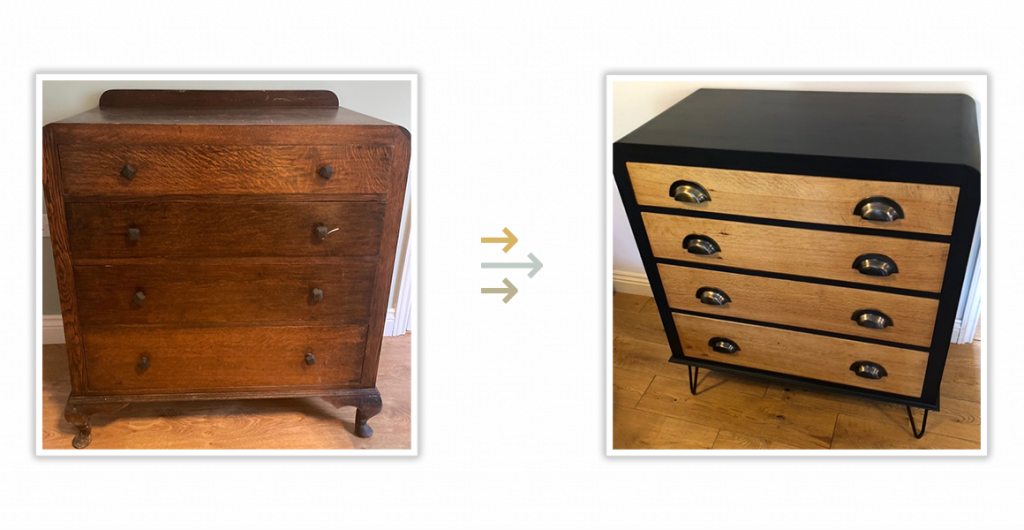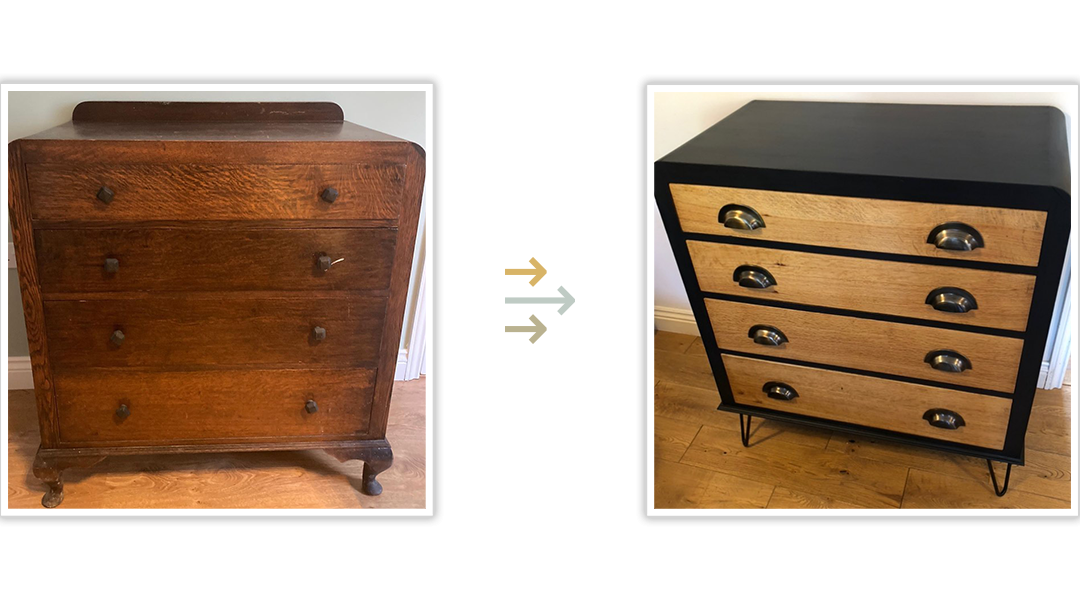The great thing about upcycling furniture is there are no limits to the amazing types of furniture you can work with to achieve the look you want in your home. It’s a cost-effective option and an investment in sentimental heirlooms or just an incredible way to have sustainable furniture with a high-end feel.
Upcycling is an exciting way to breathe new life into your furniture. Anyone can join the upcycling revolution and to help we have put together steps to get your upcycling projects underway.
1. Sourcing Your Furniture
The best place to source vintage furniture is charity shops. Pricing is usually quite fair, the range is incredible and you’re also giving back to society by supporting a charity. Its a win-win! You can also source furniture from eBay, Gumtree and Facebook Market Place.
2. Preparing Your Furniture
Preparation is key to upcycling furniture. Plan and ensure you have the correct tools and equipment to complete the furniture preparation. Start by cleaning the furniture, giving everything a good wipe down. The aim is to remove any oils, chemicals and anything that could get drawn out using chalk paint. Leaving any residue on the surface could result in needing to sand the paint off if any discolouration occurs once dry.
3. Preparing Your Furniture: Sanding
If you have any loose surfaces, cracks in varnish or peeling paint, use sand paper to remove the surface debris until completely smooth. Any cracks or inperfections in the existing surface can show through the paint so it’s vital to get the surface as smooth as possible before you start painting.
4. Preparing Your Furniture: Remove Accessories
Remove all furniture accessories, this can include handles, hinges and anything that could make it awkward to complete the painting of the piece. If this isn’t possible, we recommend coating the pieces you want to remain unpainted with Copydex (a latex type solution), this can be peeled off after completion of the furniture.

5. Preparing Your Furniture: Masking
Use masking tape to cover any areas of the furniture that need to remain unpainted. Masking is particularly beneficial on mirrors or painting next to glass. Make sure the masking tape has securely sealed the desired area prior to painting, this can be achieved by running your finger down the leadings edge of the tape. We also recommend a strong masking tape such as Frog Tape. The cheaper stuff just isn’t as good!
6. Painting Your Furniture: Choosing Your Paint
The Upcycle Company use Grand Illusions Chalk Paint. It’s versatile and quick drying paint, packed with natural pigments and designed to creamy but not too thick and gloopy, making this chalk paint easy to use! Inspired by milk paint from the eighteenth century Grand Illusions Vintage Paint has an amazing 46% chalk content, the highest chalk paint that we know of on the market. Their paint is also self priming which saves you time and money when preparing your furniture. And did we mention the colour palette is gorgeous!
7. Painting Your Furniture
Depending on how old your piece is, you may need to seal your furniture with a coat of shellac varnish prior to painting the furniture with chalk paint. This is generally the approach to older pieces with a build up of residue, waxes, tobacco staining etc. The shellac, creates a barrier and seals any staying from being drawn out in the paint. With newer pieces, start with your first coat of chalk paint. Aim to apply it sparingly with a soft, high quality brush to ensure smooth application with no drips and runs. Leave the initial coat for 24 hours to dry. Follow the initial coat with 2-3 coats to get an even finish. After your paint is fully dry, this is where you would add any distressed effects using a light sand paper.
8. Sealing your Furniture
Once you are happy with the coverage on your piece of furniture, it is completely dry and any distressing sanding has been completed, the next stage is to seal the chalk paint. You can seal the chalk paint with clear Grand Illusions Furniture Varnish, which has a beautiful matt sheen finish. We recommend 2 coats and again, use sparingly and try to get an even coat across your piece of furniture with a good quality soft paint brush. The sealant varnish dries quite quickly but we would suggest allowing at least 3 hours between coats, depending on room temperature. Alternatively, you can use a wax to seal, we usually apply this with a lint free cloth, then buff any excess wax off to a sheen finish. It’s worth noting that wax can take a little longer to harden but really its down to your own preference.
